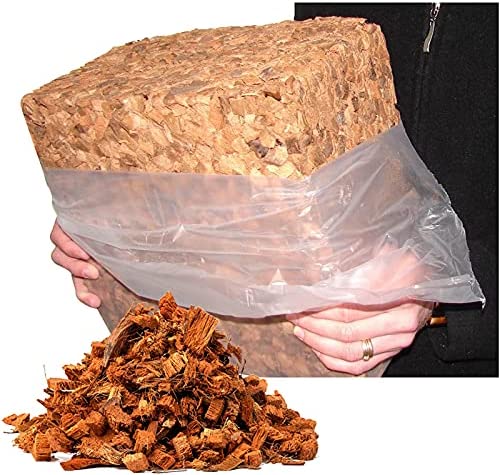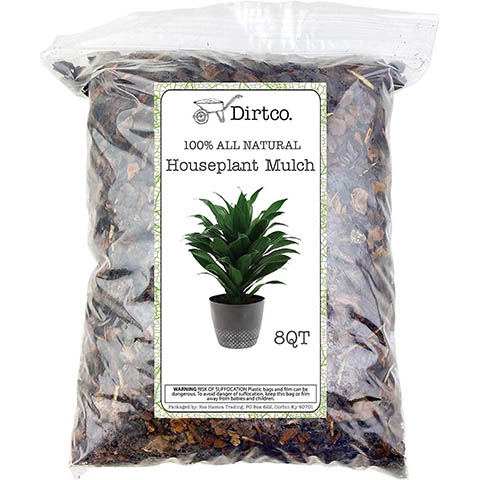What Are the Best Mulches to Prevent Weeds & Bugs? 4 Great Options
-

- Last updated:
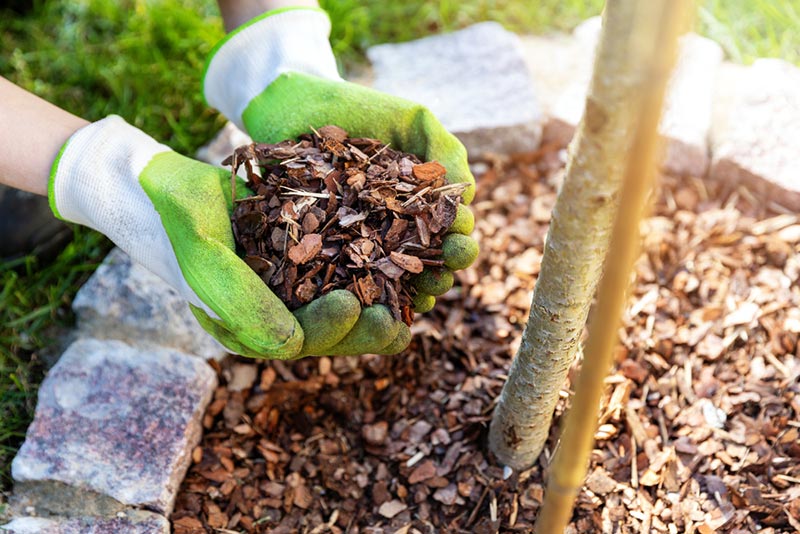
There’s a secret weapon to help your garden look great while also preventing weeds and bugs. Mulch! When it comes to unwanted garden pests, mulch is your friend. It helps control moisture, weeds, and bugs by keeping the ground underneath it cool and moist.
The best mulches not only prevent the growth of weeds but also repel various insects. There are many different types of mulches available, each with their own benefits and drawbacks. That’s why it’s important to do some research before you apply any type of mulch in your garden. Luckily for you, we have all the information you need about the best mulches for your garden to help prevent nuisances. Keep reading to find out more.
The 4 Mulch Options to Prevent Weeds and Bugs
1. 100% Natural Cedar Shavings Mulch
100% cedar mulch is the best way to repel weeds and bugs in your garden. Cedar has long been used to repel bugs such as ants, termites, mosquitos, moths, and cockroaches. This is because they don’t like the smell of it. It also helps prevent weeds from growing due to protecting the soil. It also prevents sunlight from reaching the soil, so weeds can’t get the light they need to grow. Finally, mulch of any kind helps with water retention.
We like this 100% cedar mulch from Amazon.
- Easy to apply
- Helps plants hold moisture
- Odor absorbent
- Needs to be replaced frequently
2. Pine Straw Mulch
All-natural pine mulch is an inexpensive yet effective way to cover your landscape beds and gardens. Like cedar, the smell of pine repels annoying insects, especially mosquitos and flies. Because pine straw provides such a thick layer of coverage, it’s ideal for helping to suppress weeds. As it decomposes, it adds nutrients to the soil. Plus, it’s lightweight and easy to install, making it the perfect choice for anyone looking for a hassle-free way to improve their landscape. If you want an affordable, no-frills option, here is a substrate to consider.
If you live in an area without pine trees, you can buy pine straw on Amazon.
- Inexpensive
- Repels annoying insects
- Easy to apply
- May not repel as many bugs
- May need to apply several layers
3. Coconut Husk Chips
Coconut mulch lasts a long time and works well in large gardens, although it can be pricey. Coconut husk mulch, also called coir, is made from the coconut’s outer shell, making it a more sustainable option to other mulch options. It can also withstand extreme weather conditions and is more stable than bark chips. Coconuts also repel insects such as flies, ticks, and mosquitoes. They also provide soil enrichment for plants. Coir has a high capacity for holding water. It’s also effective at controlling weeds and can last longer than other types of mulch.
We like this coconut husk chip mulch from Amazon.
- Lasts a long time
- Great for moisture retention
- Repels flies and mosquitos
- Pricey
4. House Plant Mulch
If you have tropical or other indoor plants, houseplant mulch is a great choice for keeping small flying insects such as gnats away from your plants. These chips are more durable than coconut coir shavings or shavings and this mulch adds drainage consistency to potted plants. You usually don’t have to worry about weeds with indoor plants, but house plant mulch acts as an insulated, shaded covering for potting soil to prevent plant roots from becoming too hot in the summer. It can also be used to insulate roots during winter months, especially if you keep your plants outdoors on a screened-in porch.
Check out this house plant mulch on Amazon.
- Helps repel gnats
- Good for temperature insulation
- High-quality mulch material
- Not ideal for outdoor plants
How to Choose the Right Type of Mulch for Your Garden
The first step in choosing the right type of mulch for your garden is to determine the area of your garden where you want to use it. There are different types of mulch available, each with their own benefits.
For Your Garden Beds
You can use bark, wood chips, or compost as mulch in your garden beds. Pine straw and pine bark work particularly well in any type of soil.
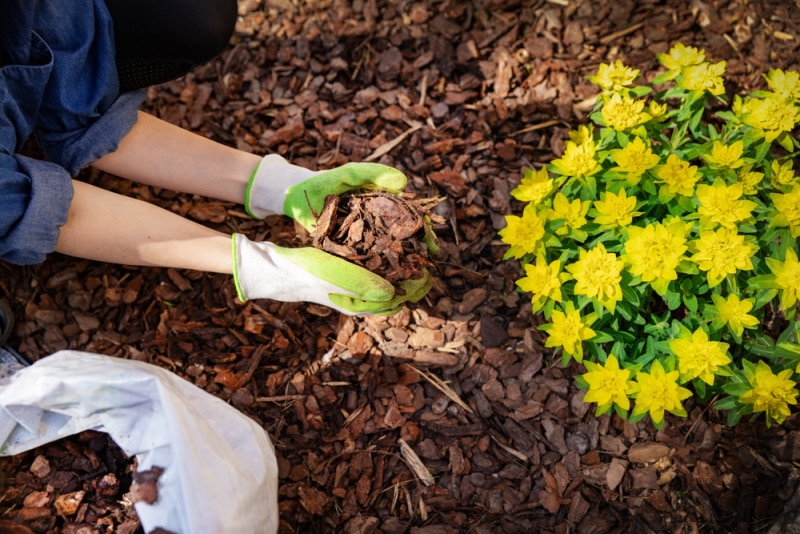
Underneath Trees and Shrubs
You can use wood chips, shredded bark, shredded hardwood, or straw as mulch under your trees and shrubs. Wood chips, shredded bark, and shredded hardwood are best for areas that receive a lot of moisture.
Around Your Vegetables and Fruit Trees
Straw, grass clippings, bark, and wood chips are good options for mulching your vegetable and fruit trees, as well as your rows of vegetables and fruit. The great thing about wood chips, straw, and grass is that these are relatively inexpensive mulching options that you can create yourself or easily procure locally at gardening stores.
Around Your Flowers and Ornamental Plants
Bark, shredded bark, shredded hardwood, or straw are good options for mulching around your flowers and ornamental plants. Bark allows for sufficient drainage, which is crucial for small and medium-sized plants.
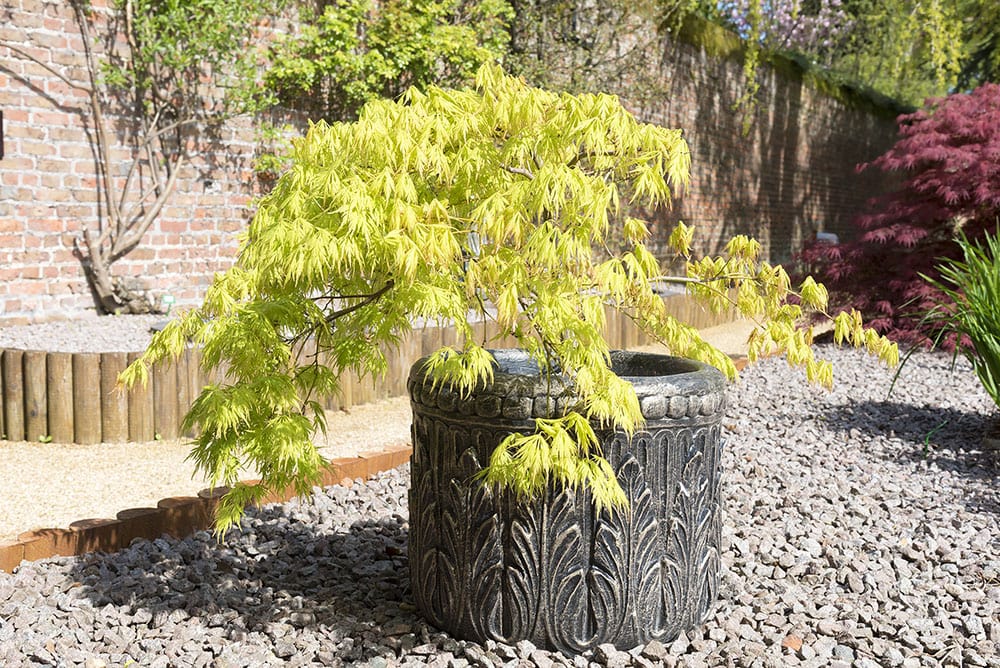
Direct Benefits of Mulch
Mulch is a layer of compost material that is spread on the soil surface around the plants. It helps in retaining moisture, preventing weeds, and improving the soil texture.
- Increased soil moisture: With the proper amount of water and nutrients, plants grow better and produce more fruits and flowers.
- Disseminating of nutrients: When added to the soil, mulch feeds the plants with essential nutrients.
- Helping in weed control: When applied around the plants, it prevents the growth of weeds and keeps the soil clean.
- Improvement in soil structure: Mulch provides the necessary structure to the soil and improves its texture.
- Avoiding soil crusting: It prevents soil from crusting, helping in better water infiltration.
- Reducing soil erosion: Mulch prevents soil from eroding and protects the topsoil from heavy rains.
- Promoting earthworms: Earthworms are the best companions of a gardener. They help in soil aggregation and make it rich with nutrients.
- Increasing soil temperature: Mulch greatly helps in increasing the soil temperature and prevents early flowering.
- Repelling insects: Mulch can repel annoying insects such as biting flies and mosquitos, but may not repel bugs such as caterpillars that feed on your plants.
Ways to Make Your Own Mulch
Mulching is a process that involves spreading small pieces of wood and other finely chopped materials on the top of the soil in your garden. The primary objective of mulching is to retain moisture in your soil while providing an excellent habitat for beneficial microorganisms that’ll aid in your plant’s growth. Let’s discuss some ways to make your own mulch.
1. Dried Leaves
Dried leaves can make an excellent mulch for your plants. The best way to make dried leaves for mulch is to wait until the leaves start to fall in autumn. After a few weeks, the leaves will be fully dried and ready to be used as mulch. If you are in a hurry, you can place the leaves in your garage or in any other warm place to speed up the process.
Once they’re dry, you can store them in bags until you need them. You can use the leaves as-is or you can crush them into smaller pieces.
Make sure you collect the leaves from trees that are not poisonous. The best trees for collecting leaves from are maple, oak, and dogwood. Once you have the leaves, you can place them in a place where they can be raked up and turned over every so often to fully dry them out.
2. Coffee Grounds
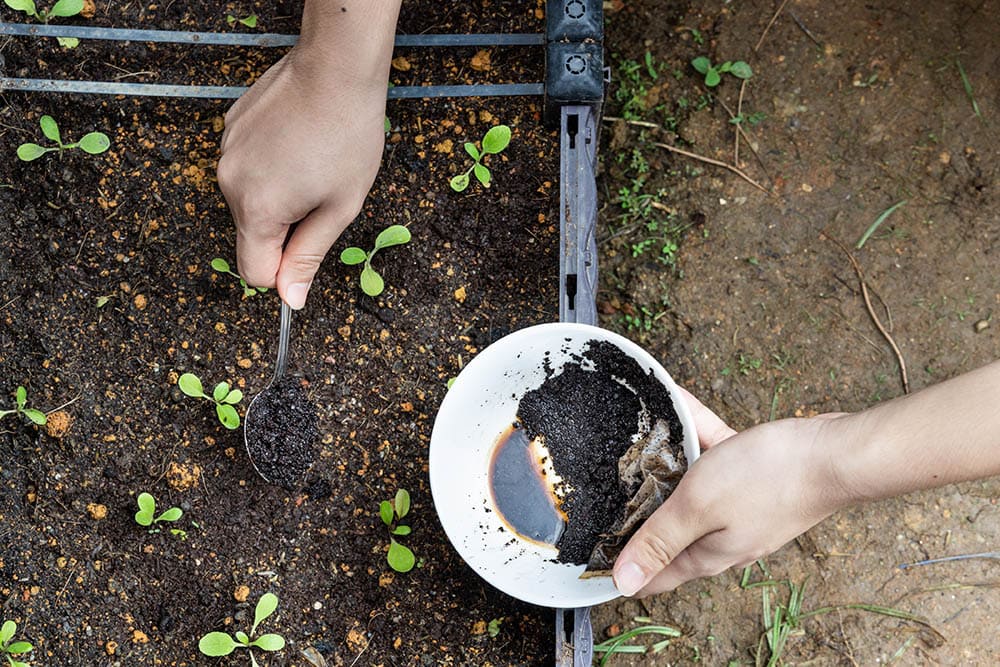
Coffee grounds are a great way to enrich the soil and make a unique-looking mulch. You can either use fresh coffee grounds or dried coffee grounds for mulch. To make coffee grounds for mulch, you first need to collect fresh coffee grounds or dry the coffee grounds that you have already used.
If you use fresh grounds, then wait for the coffee to finish brewing and pour the grounds directly into your garden. But if you’re using dried coffee grounds, they should be moistened before use. And if you want to store the coffee grounds for future use, you can compost them or dry them out.
To dry coffee grounds, spread them on a screen or in a thin layer in your garden and wait for them to dry out. You can also put them in a paper bag and leave them in a dry place. Once they are dry, you can use them as mulch in your garden.
3. Eggshells
Eggshells are an excellent source of calcium, and they can be used to make an excellent mulch for your garden. To make eggshell mulch, you need to first collect the eggshells that have been discarded. You can also purchase them from a nearby egg vendor. After collecting the eggshells, you need to crush them up. To do so, you can also run them through a blender to make them more manageable.
Make sure that the pieces are small enough to be used as mulch. You can store the eggshells in a bag or container until you are ready to use them – they’ll last several months if kept dry. You can use the crushed eggshells as is, or you can dry them out before using them.
To dry them, simply spread the crushed eggshells in a thin layer on a screen or tray and leave them in a dry place. Once they’re dry, you can add them to the soil or use them as mulch.
4. Cardboard

Cardboard is also a great source of recycled material, and it can be used as mulch in your garden. You can collect discarded cardboard boxes from your neighborhood or from your workplace. Make sure that you collect only clean cardboard to avoid adding pests and diseases to your garden. You can shred the cardboard using a paper shredder, or electric hand saw, or you can cut it into small squares using a boxcutter and apply it to your garden.
The best way to use cardboard as mulch is to soak it in water for a few hours. This makes it easy to work with and helps it decompose faster. You can also add a few drops of water-soluble fertilizer to speed up the process.
5. Newspaper
Newspaper is another go-to mulch source for DIYers. The paper is made of natural fibers that degrade very quickly, while the ink is non-toxic. Another advantage of using newspaper is that it can be used to mulch plants that are sensitive to wood chips.
Growing vegetables like tomatoes, peppers, and eggplants? Then you might want to consider using newspapers as mulch. To make newspaper mulch, you need to tear or cut the newspaper into small pieces. Depending on the size of the pieces, you can use it as a top layer or bottom layer of mulch. Using larger pieces of newspaper on the soil surface as a top layer is ideal for seedlings and young plants as it will help in retaining moisture and controlling weeds.
Best Way to Store Mulch
Mulch should be airy and dry. You don’t want the materials to get wet, because they will begin to smell and will eventually rot – which means even worse odors. You also don’t want it to be too dry, though, or it won’t break down properly. There are a few things you can do to keep your mulch fresh.
Make sure you keep it in a dry, covered area like a garage or shed. If your mulch is in bags, make sure you keep it closed and in a cool, dry place. Also, try not to leave mulch out if it isn’t being used. This will make it break down much more quickly, and you’ll have to replace it more often.
Where to Buy Mulch
You can buy mulch from nurseries, hardware stores, and even online. Make sure that you’re buying mulch that is safe for plants, like coconut shells and pine needles. While buying mulch, always check to see if there are any weeds growing in it.
Make sure that the mulch you buy is clean, dry, and free of pests and diseases. As a general rule, try not to buy mulch that you’ve seen stored outside – especially in winter months. Mulch that has been stored outside can be a little less than fresh.
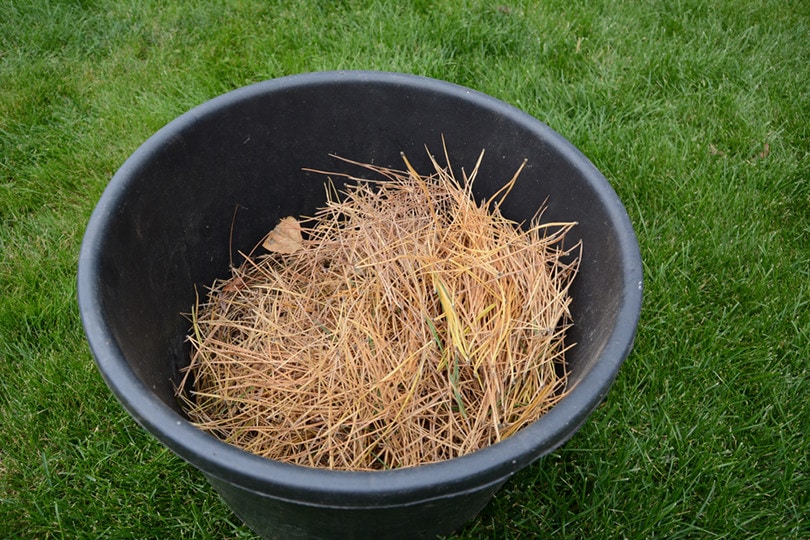
How to Save on Mulch
If you have enough space to store it, you can buy large bags of mulch and store it in your garage. This way, you can use mulch year after year without having to spend money on new bags. You can also get creative with the materials. For example, shredded newspaper leaves, and even grass clippings are great mulching materials that you can use.
If you have a garden, you can also use the trimmings from your plants. Just make sure that you have properly trimmed them. For larger areas, you can also rent a mulching machine that will help you turn your yard’s waste materials into mulch. This is a great option if you have a large property, or if you don’t have easy access to a disposal site.
Where to Place Mulch on Plants
Mulch is best spread on top of the soil. However, avoid placing it directly on top of seedlings as it can smother them. When placing mulch, make sure that it does not cover the base of the plant, because it needs to access the soil for nutrients.
Also, make sure that the plants are evenly covered with the mulch. If the mulch is too thick, it could prevent water from getting to the roots. Finally, you want to make sure that you don’t put mulch around plants that are prone to rot. These plants include tomatoes, peppers, and eggplants.
Wrapping Things Up
There are many types of mulches available for you to use in your garden, but the best for repelling bugs and preventing weeds are cedar mulch, pine straw, and coconut mulch. Choosing the right type for your garden is important because not every type of mulch is made for every type of soil. The best mulches will help to improve aeration and drainage, prevent weeds, and add nutrients to your soil. Mulch generally isn’t expensive, and you can even make it yourself using things like newspaper, wood chips, eggs, and leaves.
Featured Image Credit: ronstik, Shutterstock
Contents



